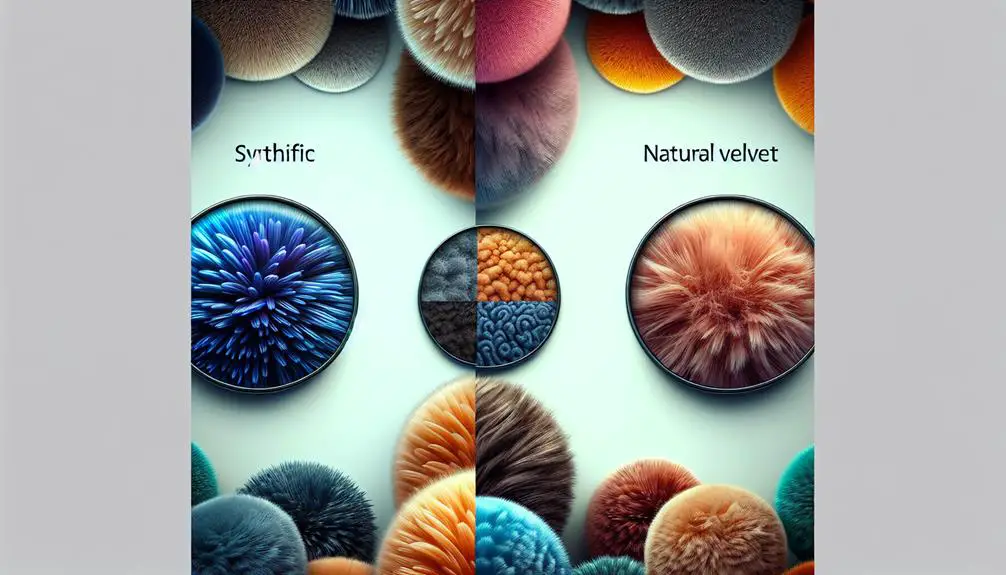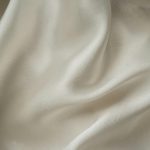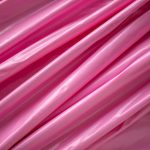I've always been intrigued by the luxurious feel of velvet, but it's tricky to tell if what you're buying is the real deal or a synthetic imitation. One quick method I use is the burn test—real velvet will produce a soft, gray ash, while synthetic fibers leave a hard, black residue. But, there's more to it than just setting a small sample on fire. The texture, weight, and absorption properties also give away clues about the fabric's authenticity. If you're curious about how to spot these differences and why they matter, stick around and let's explore this together.
Table of Contents
Key Takeaways
- Perform a burn test: Real velvet leaves soft, gray ash and has no chemical smell.
- Check water absorption: Genuine velvet absorbs water quickly.
- Assess fabric weight: Real velvet is heavier due to its dense pile.
- Examine weave structure: High thread count and uniformity indicate authentic velvet.
- Feel the texture: Authentic velvet is notably soft, dense, and plush.
Understanding Velvet Composition
To truly understand velvet, we must first explore its composition. Velvet is a distinctive fabric, known for its dense pile and luxuriously soft texture. The fabric origin traces back to the East, where it was once a symbol of wealth and power. Velvet history spans many centuries, with early production rooted in Egypt, China, and later flourishing in Italy during the Renaissance.
Velvet is crafted by weaving two thicknesses of fabric simultaneously. The process involves an intricate method where threads are evenly distributed in a loop or tufted form on a special loom. These loops are then cut to create a uniform, short pile that gives velvet its classic soft feel. Historically, silk was the primary material used, lending the fabric its rich sheen and high-end appeal.
Today, while silk velvet remains highly sought after, other materials like cotton, wool, and synthetic fibers are also used. This diversification allows for various qualities and textures in velvet, catering to different needs and preferences. Understanding this composition and its evolution is essential for anyone aiming to master the identification and appreciation of real velvet.
Burn Test Explained
Now, let's talk about how you can use the burn test to check if your velvet is real.
I'll show you how to safely perform the test and what to look for in the results.
This method is quick and can give you clear clues about the fabric's authenticity.
Performing the Burn Test
Let's explore how the burn test can help determine if your fabric is real velvet.
First, I gather the necessary equipment: tweezers, a lighter, and a small piece of the fabric. Safety is key, so I always work in a well-ventilated area and keep water nearby in case of emergencies.
Holding the fabric with tweezers, I carefully light it with the lighter. It's important to make sure I'm only testing a small section to avoid damaging large areas of the material. Observing how the fabric burns without influencing the process lets me proceed safely and effectively.
Analyzing Burn Results
After completing the burn test, I examine the ashes and smell to determine if the fabric is genuine velvet. Real velvet, often made from silk or cotton, leaves a soft, gray ash residue. If the ash is crunchy or hard, it's likely synthetic.
The smell characteristics are also telling. Natural fibers emit a smell similar to burnt paper or wood, quite distinct from synthetic fibers, which produce a chemical or plastic-like odor.
Observing these outcomes, I can confidently evaluate the material's authenticity. This simple, yet effective method saves me from costly mistakes in identifying fabrics. By focusing on the ash residue and smell characteristics, I make sure I'm working with true velvet.
Water Absorption Method
One effective way to test for real velvet is by checking how the fabric absorbs water. Here's how I do it: I start by lightly sprinkling water on a small area of the velvet. Real velvet, typically made from natural fibers like silk or cotton, absorbs water fairly quickly. The area where the water hits usually darkens.
To precisely assess this, I use a simple towel comparison. I place a drop of water on both the velvet and a standard towel, observing the absorption rate. The towel, known for its quick drying speed, serves as a benchmark. If the velvet absorbs water almost as quickly as the towel, it's likely genuine.
However, if the fabric repels water or the droplet sits on the surface for a prolonged period, caution is needed. Synthetic velvets or velvet-like materials often have some degree of water resistance. This isn't foolproof, but it's a solid clue.
I also check how it dries. Real velvet usually doesn't retain moisture for long and dries at a rate similar to the towel. If the sample stays damp or shows a significant difference in drying speed compared to the towel, it might be synthetic.
Assessing the Fabric Weight
Evaluating the fabric weight offers another reliable indicator of real velvet's authenticity. Real velvet typically feels heavier compared to synthetic counterparts due to its dense pile and the natural fibers used, like silk or cotton. When I pick up a piece of genuine velvet, the heft is noticeable. It's not just heavier; it's richer in texture.
To accurately assess this, I sometimes use a small scale to compare weights of different fabric samples. This might sound a bit technical, but it's quite straightforward. I measure the fabric's thickness too. A simple ruler can help gauge the thickness of the velvet. Thicker, denser fabrics usually suggest a higher quality and more authentic velvet.
Another aspect I check is fabric elasticity. Real velvet has a unique flexibility. When I stretch it gently, it should display a moderate elasticity, returning to its original shape without sagging. This resilience is a good sign of well-made fabric.
Examining the Weave Structure
Turning to the weave structure, I closely examine how the threads are interlaced to determine the velvet's authenticity. Real velvet has a unique weave that sets it apart from imitations. Here's what I focus on:
- Thread Count: High-quality velvet features a high thread count. This enhances the fabric's overall feel and appearance. I count the threads in a set area to gauge the density.
- Fiber Density: The density of the fibers in true velvet is notably higher compared to faux velvet. This density contributes to the luxurious softness and durability of the fabric.
- Weave Tightness: The tightness of the weave impacts the fabric's ability to resist wear and tear. Real velvet usually has a very tight weave, something I can feel when running my hand across the fabric's surface.
- Uniformity of Weave: In genuine velvet, the weave is typically uniform and flawless. Any irregularities often indicate a lower quality or synthetic alternative.
Checking for Color Depth
Next, I'll demonstrate how to evaluate the color depth of velvet.
We'll begin by examining any shifts in hue and then conduct a light reflection test.
These techniques assist in verifying if the velvet's color is vibrant and properly responds to light.
Assessing Hue Variation
To check for color depth in real velvet, observe how the fabric's hue changes under different lighting conditions. Here's how I do it:
- Natural Light Inspection: I first look at the velvet in natural light. Real velvet usually shows rich, deep colors that shift subtly with movement.
- Indoor Light Shift: Moving indoors, I check if the color consistency holds or if there's any drastic change in shade.
- Shade Comparison: I compare the fabric's shade under different lights side-by-side. Significant variation often indicates higher quality and depth.
- Angle Variation: I tilt and flex the fabric. Genuine velvet will display a dynamic color change when viewed from various angles.
This method helps me discern the quality and authenticity of velvet efficiently.
Light Reflection Test
When I perform the light reflection test on velvet, I carefully observe how the fabric reflects light to assess its color depth and quality. Real velvet shows a unique fiber glossiness that shifts subtly as I change the viewing angle. This angle inconsistency helps differentiate it from synthetic alternatives, which often have a more uniform sheen.
Here's a simple table reflecting my observations:
| Angle | Real Velvet | Synthetic Velvet |
|---|---|---|
| 0° | Rich, deep | Flat, dull |
| 45° | Lustrous | Slightly shiny |
| 90° | Muted glow | Glossy |
This test reveals the complex interplay of light and texture in authentic velvet, setting it apart with its luxurious, multi-dimensional appearance.
Feel and Texture Analysis
I'll start by feeling the fabric's surface to distinguish real velvet from imitations. When I touch genuine velvet, I notice several distinctive features:
- Softness: Real velvet has a uniquely soft and smooth texture. It feels luxurious and gentle against the skin. I can run my fingers over it and feel the plushness without any harshness or scratchiness.
- Density: By pressing down lightly, I observe the fabric's density. Real velvet tends to be denser and thicker due to its tightly woven fibers. This gives it a substantial, comforting weight.
- Resilience: After I press my fingers into the velvet, I watch how it reacts. Real velvet typically springs back quickly, showing good fabric resilience. This elasticity is a key indicator of quality and durability.
- Touch Sensitivity: The touch sensitivity of real velvet is remarkably high. It responds instantly to even the slightest touch, often changing its appearance slightly, which is evident in the way it catches light differently in areas where it's been brushed.
Comparing Shine and Luster
When I look at real velvet, I notice how it changes shine depending on the light.
This variability in light reflection shows the depth and richness of its color.
It's a key sign I use to tell apart true velvet from imitations.
Light Reflection Variability
Real velvet often displays a unique variability in how it reflects light, showing differing levels of shine and luster as you move it. This characteristic makes it quite distinctive. Here's what I've noticed about how real velvet behaves:
- Angle measurements: When I tilt velvet at various angles, the brightness and intensity of the shine change dramatically, unlike synthetic alternatives.
- Light source direction: The type of light and its direction dramatically affect how the velvet looks. Natural light versus artificial light shows marked differences.
- Shadow patterns: Movements create dynamic and varying shadow patterns across the surface of the fabric.
- Surface texture interaction: The interplay between the fabric's texture and light creates a rich, multi-dimensional effect.
Understanding these aspects helps in identifying true velvet.
Depth of Color Perception
Analyzing the depth of color perception in velvet, I notice that its shine and luster vary significantly under different lighting conditions. This variation can be a telltale sign when distinguishing real velvet from imitations.
Real velvet typically displays a rich, deep color that enhances its luxurious feel. However, I must be wary of color fading issues and saturation inconsistency, which can signal inferior quality. These problems often manifest in cheaper materials that attempt to mimic the elegance of true velvet.
Price as an Authenticity Indicator
The price of velvet can often give you a clue about its authenticity. It's not just about the tag; it's about understanding why something is priced the way it is. High-quality velvet, especially those made from natural fibers like silk, commands a higher price due to its texture, durability, and the complexity of its production processes.
Here's what I look for regarding pricing to judge the authenticity:
- Comparison with Market Trends: Authentic velvet generally aligns with current market prices for luxury textiles. If it's notably cheaper, that's a red flag.
- Retailer Reputation: Trustworthy retailers often price their goods to reflect the true quality. High prices at a reputable retailer can be a good sign of genuine velvet.
- Price Consistency: Genuine velvet usually has consistent pricing across different platforms, barring sales or clearances. Wild fluctuations can indicate inconsistencies in fabric quality.
- Quality vs. Price: Even if the price is high, I always check if the quality justifies it. Real velvet has a soft feel and rich color depth that should match a premium price tag.
Where and How It's Made
Understanding where and how velvet is made further informs its authenticity and quality. Production locations vary, but historically, regions like Italy, France, and more recently, China, are known for velvet manufacturing. Each place has its unique approach, impacting the fabric's feel and appearance.
The manufacturing techniques also play a vital role. Traditional velvet is made on a special loom that weaves two thicknesses of the material simultaneously. This method is known as double cloth weaving. The threads are then split down the middle, creating the pile effect that gives velvet its distinctive soft feel. This process is labor-intensive and usually signals higher quality and authenticity.
Modern techniques involve mechanized looms that can speed up production but might compromise on the plushness of the velvet. Additionally, synthetic fibers like polyester are often used to reduce costs, which results in a less luxurious feel. I always check the label to see the fiber content and look for key phrases like 'silk velvet' – a marker of high-quality material.
Frequently Asked Questions
Can Real Velvet Cause Skin Allergies?
Yes, real velvet can cause skin allergies, depending on its fabric composition. I'd recommend allergy testing if you're experiencing reactions, to confirm it's the velvet and not another irritant.
Is Vintage Velvet Better Than Modern?
I think vintage velvet often surpasses modern due to time-proven production methods and superior fabric durability. It's crafted to last, reflecting a mastery in textile production not always found in contemporary pieces.
How Does Sunlight Affect Velvet's Color?
Sunlight can cause velvet's color to fade due to limited UV resistance. I've noticed prolonged exposure dulls the vibrancy, making careful placement away from direct light essential for maintaining its original beauty.
Are There Eco-Friendly Velvet Options?
Yes, there are eco-friendly velvet options available. They're made from recycled fibers and involve sustainable sourcing practices. I've found these materials are just as luxurious but much better for the environment.
Can Real Velvet Be Machine Washed?
I've learned that real velvet requires specific fabric care. Typically, it can't be machine washed; instead, dry cleaning methods are recommended to maintain its texture and appearance without risking damage.
- The Use of Nonwovens in Construction and Civil Engineering - July 11, 2025
- The Use of Nonwovens in Construction and Civil Engineering - July 11, 2025
- The Use of Nonwovens in Construction and Civil Engineering - July 11, 2025







